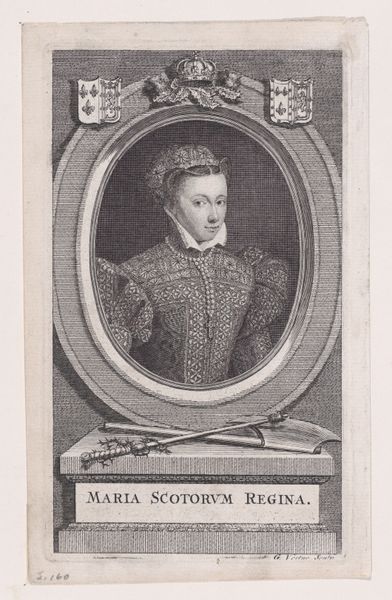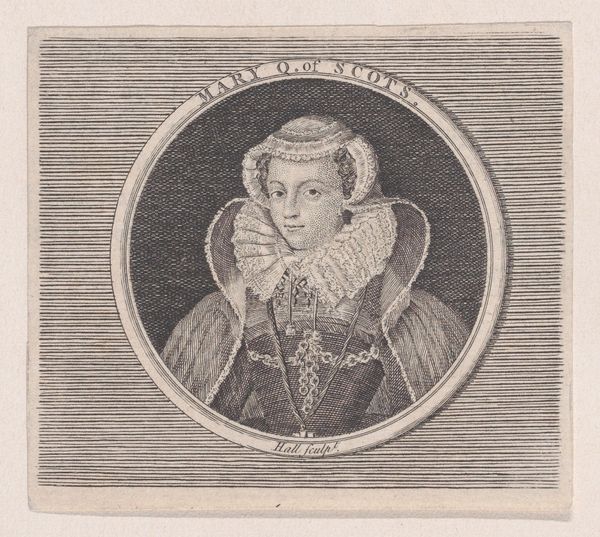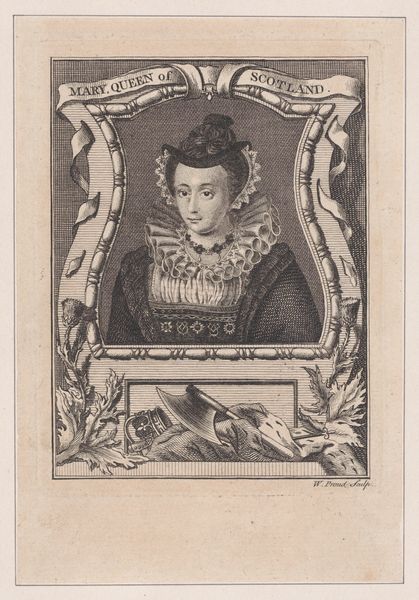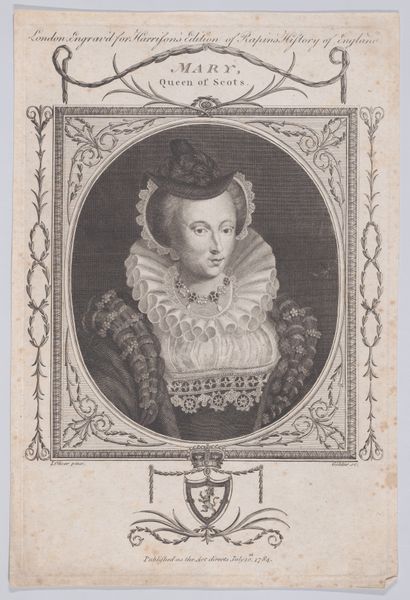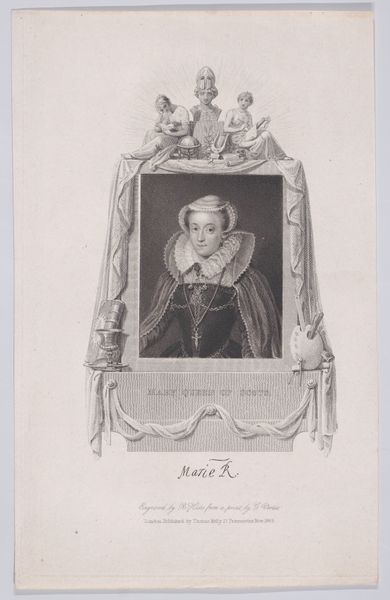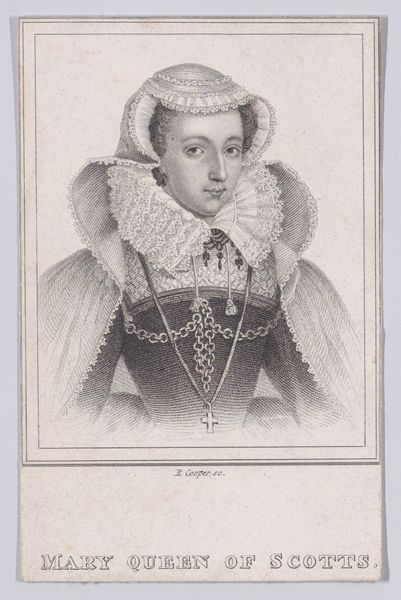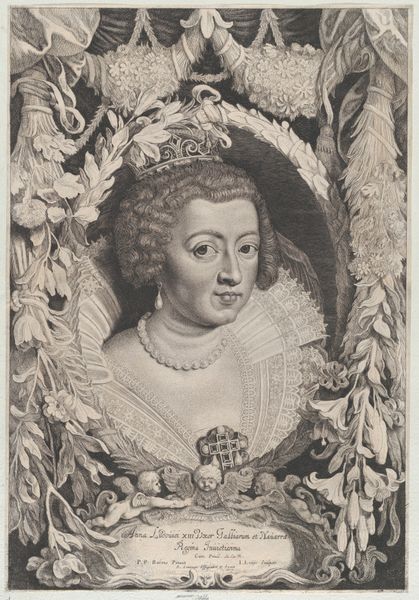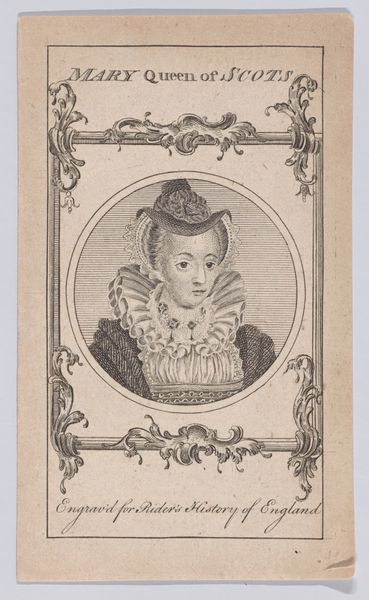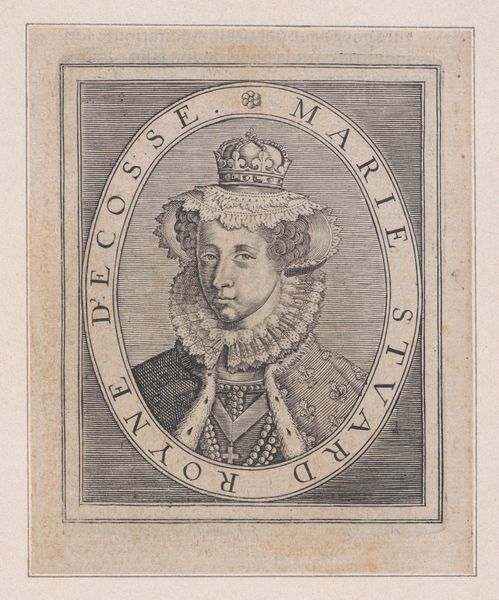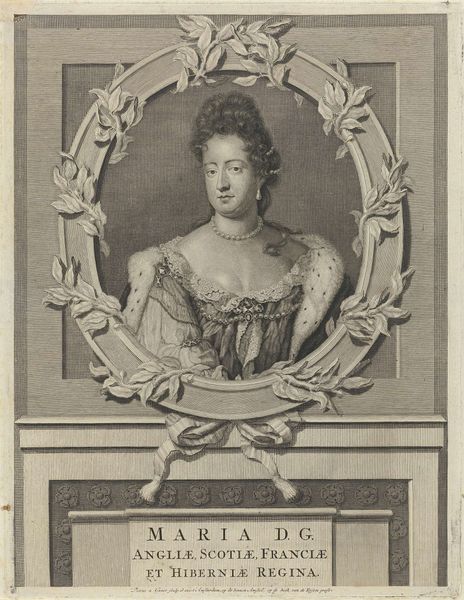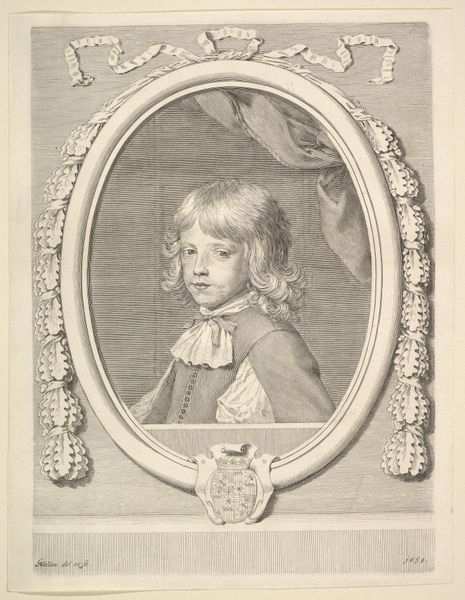
drawing, print, engraving
#
portrait
#
drawing
#
baroque
# print
#
engraving
Dimensions: Plate: 6 15/16 × 4 1/16 in. (17.7 × 10.3 cm) Sheet: 7 1/4 × 4 1/4 in. (18.4 × 10.8 cm)
Copyright: Public Domain
Curator: Here we have a work by George Vertue entitled "Mary, Queen of Scots" created in 1729. It is a detailed engraving. Editor: The first thing I notice is how constrained the figure feels. Even with that elaborate lace collar, there is an inescapable sense of imprisonment. It is somber in mood, but forceful, as befitting of the depicted historical figure. Curator: Vertue was known for his precision, particularly in replicating historical portraits. Note the density of the lines in the dress and the relative sparseness of the face that nonetheless retains a palpable depth. The use of an oval frame adds to the sense of formality. Editor: The ornate frame becomes a site for interpreting Mary's complicated life. Placed on top of what looks like decorative floral tapestry, this adds layers of symbolic texture. It creates a complex backdrop, emphasizing Mary's position as a woman navigating complex systems of power, expectation, and ultimately, constraint. She was born into power and sovereignty, yet, by political treachery, intrigue, and, one could argue, her identity, she ultimately faced execution. Curator: I'm drawn to how the technical skill renders light, creating depth and dimension through variations in line thickness and density. Editor: Indeed. Light falls delicately across the face, yes. But her dark, piercing gaze hints at intelligence but also a foreboding resignation. One can find references to intersectional issues within, in terms of Mary Stuart’s place as an absolutist monarch vis-à-vis that of other contemporaneous female rulers; furthermore, she suffered the particular political and existential crises she did because she was a female absolutist ruler. Curator: So true. The detail captured, within the frame and overall compositional choices, shows a desire to emulate reality as much as possible via linear transcription. It presents the queen in a very Baroque style that suits her stature. Editor: When seeing the subject through Vertue’s eyes, this is a lens focusing less on power, I think, than on the conditions of her being; on who and how she had to be for others in a relentlessly patriarchal world. Curator: Yes, examining this engraving leads me to concentrate on how Vertue expertly uses light and shadow to capture the essence of Mary, Queen of Scots within the stylistic conventions available to him. Editor: And reflecting on it deepens my empathy for the struggles faced by historical figures like Mary, Queen of Scots, struggles that echo through time and continue to influence contemporary discourse surrounding power, gender, and identity.
Comments
No comments
Be the first to comment and join the conversation on the ultimate creative platform.
